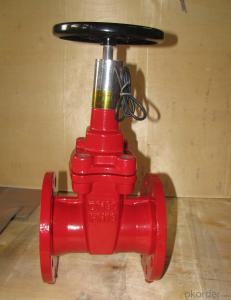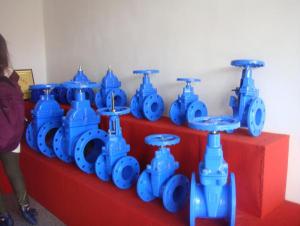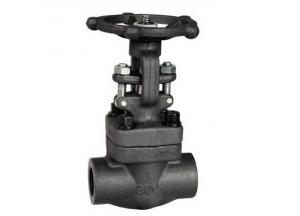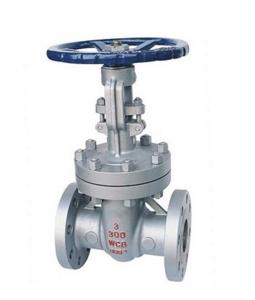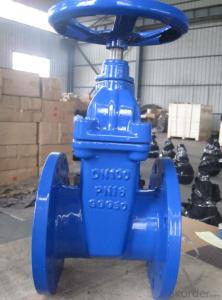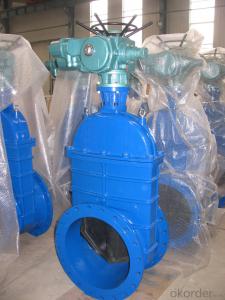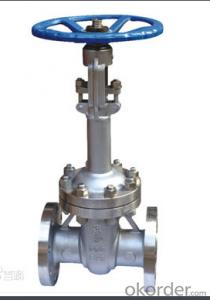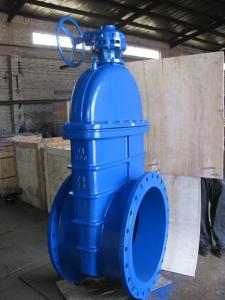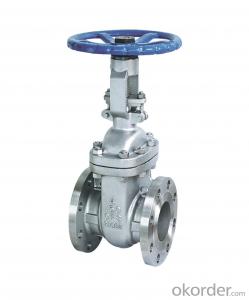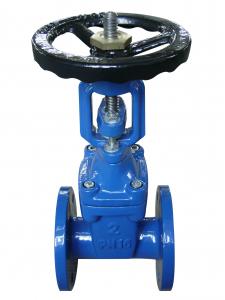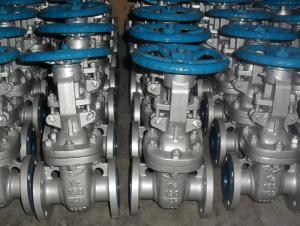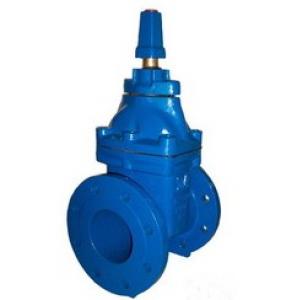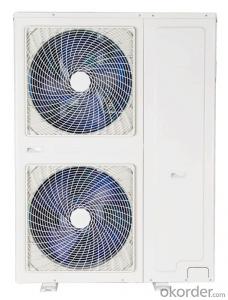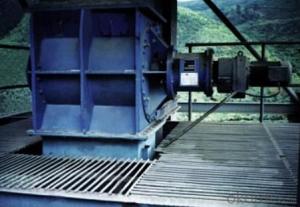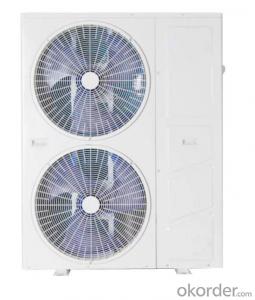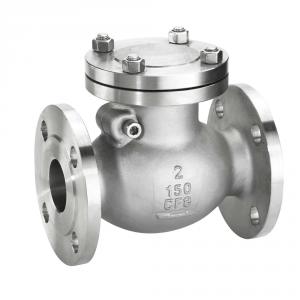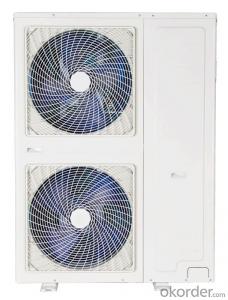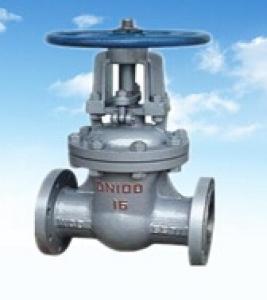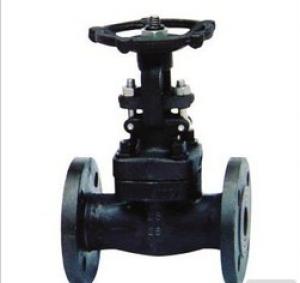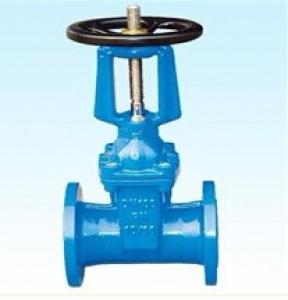Gate Valve GOST Standard Cuniform Flanged Light Grade Water Oil Pipe Used Carbon Steel
- Loading Port:
- Tianjin
- Payment Terms:
- TT OR LC
- Min Order Qty:
- 200 kg
- Supply Capability:
- 10000 kg/month
OKorder Service Pledge
OKorder Financial Service
You Might Also Like
1.Structure of Gate Valve Description:
A gate valve, also known as a sluice valve, is a valve that opens by lifting a round or rectangular gate/wedge out of the path of the fluid. The distinct feature of a gate valve is the sealing surfaces between the gate and seats are planar, so gate valves are often used when a straight-line flow of fluid and minimum restriction is desired. The gate faces can form a wedge shape or they can be parallel. Gate valves are primarily used to permit or prevent the flow of liquids, but typical gate valves shouldn't be used for regulating flow, unless they are specifically designed for that purpose. Because of their ability to cut through liquids, gate valves are often used in the petroleum industry. For extremely thick fluids, a specialty valve often known as a knife valve is used to cut through the liquid. On opening the gate valve, the flow path is enlarged in a highly nonlinear manner with respect to percent of opening. This means that flow rate does not change evenly with stem travel. Also, a partially open gate disk tends to vibrate from the fluid flow. Most of the flow change occurs near shutoff with a relatively high fluid velocity causing disk and seat wear and eventual leakage if used to regulate flow. Typical gate valves are designed to be fully opened or closed.When fully open, the typical gate valve has no obstruction in the flow path, resulting in very low friction loss.
2. Main Features of the Gate Valve:
• Valve body cavity using non-toxic epoxy resin,both inside and outside flashboard completely is coated with rubber
• Free of water pollution
• High manufacturing accuracy
• High strength
• Environmental protection and energy saving
• Good visual effect
3. Images
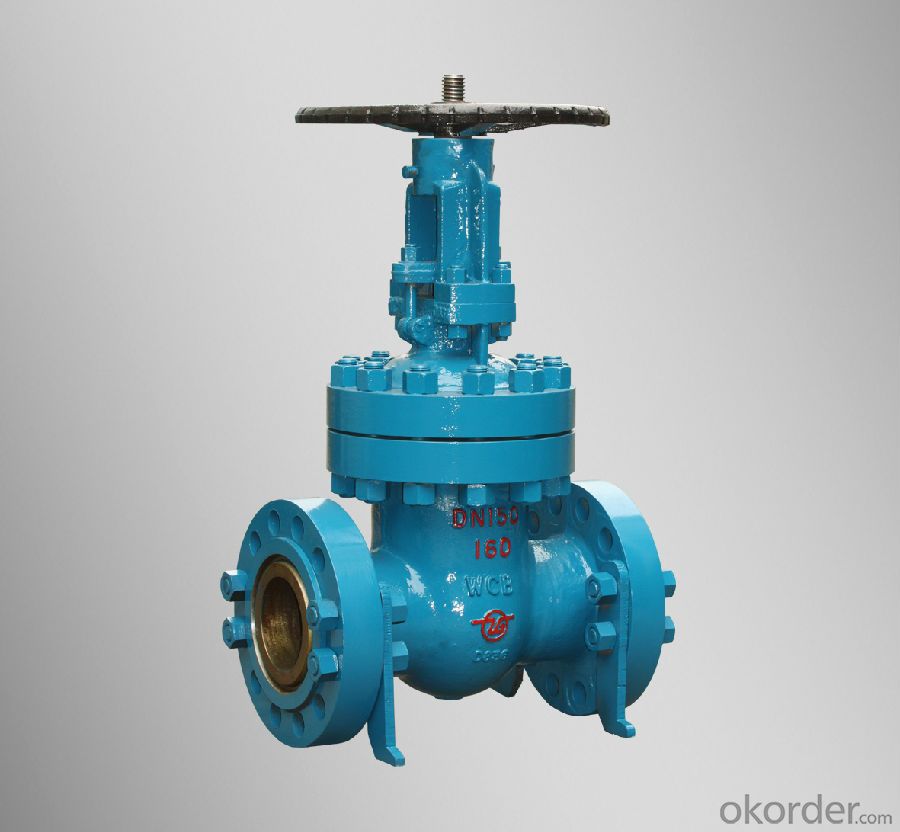

4. Gate valve Specification
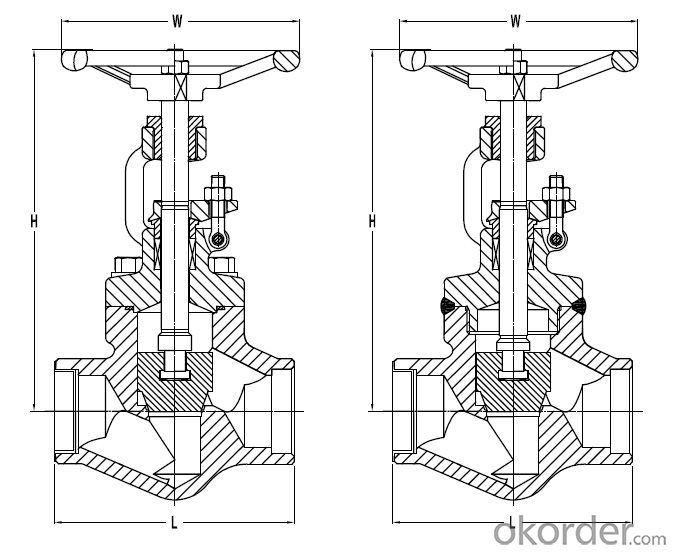
5.FAQ
1. What's are the characteristics of gate valve?
The distinct feature of a gate valve is the sealing surfaces between the gate and seats are planar, so gate valves are often used when a straight-line flow of fluid and minimum restriction is desired. The gate faces can form a wedge shape or they can be parallel.
2. What is the work principle of gate valve ?
The gate faces can form a wedge shape or they can be parallel. Gate valves are primarily used to permit or prevent the flow of liquids, but typical gate valves shouldn't be used for regulating flow, unless they are specifically designed for that purpose. Because of their ability to cut through liquids, gate valves are often used in the petroleum industry.
3. What is the structure?
Bonnets provide leakproof closure for the valve body. Gate valves may have a screw-in, union, or bolted bonnet. Screw-in bonnet is the simplest, offering a durable, pressure-tight seal. Union bonnet is suitable for applications requiring frequent inspection and cleaning. It also gives the body added strength. Bolted bonnet is used for larger valves and higher pressure applications.
- Q:Why? God, can you explain to me in detail why?
- The exit of the general pump is the first soft connection (shock absorber), followed by the check valve, and then the partition valve (such as butterfly valve, gate valve, cut-off valve, etc.), this is not the final answer.The question is interesting, and no corresponding information has been found in the relevant standards. We have also discussed the related issues, but differences of opinion is relatively large, the advantages of 1, first installed check valve installed after the valve or butterfly valve, check valve, can be protected, especially in a parallel pump, when the pump does not start, another pump starts when the impact force is gate valve or butterfly valve bear, disadvantages: gate valve or check valve who will protect? There have been a case of butterfly valve is broken. 2, first installed gate valve or butterfly valve installed after the check valve, advantages: can protect the butterfly valve or gate valve, the impact on the check valve to bear. Disadvantages: check valve who will protect, check valve by pressure difference switch, if the high pressure high pressure pipe, pump, if the flow is not stable, so check valve will repeatedly switch, will affect the check valve life. Personal opinion: check valve, check valve performance now have changed, many are using the slow closing check valve, so the impact force is two aspects to bear, because exports are not fully open the valve or butterfly valve, so you can put in check after the gate valve or butterfly valve valve. If not the slow closing check valve installed in the valve or the best after the butterfly.
- Q:What are the common standards for gate valves?
- 1, product standardsGeneral purpose valves, flanged connections, iron gate valves, GB/T 12232-2005General requirements for steel valves GB/T 12224-2005"Steel flat gate valves for pipelines" JB/T 5298-91Inspection and test of valves. JB/T 9092-1999Standard for safety evaluation of drinking water distribution equipment and protective materials GB/T 17219-1998
- Q:What do you mean by "2" and "200 CF8M"?
- CF8M is 316,2 "is 50200 caliber stainless steel pressure (American Standard, LB)
- Q:What is a protective gate valve? What is gate valve knowledge?
- it is up to the function of a single valve can not reach the exit of the product is installed in the water supply pipe and the head of civil air defense to conveying medium to stop, wave and wave combination, to prevent internal shock wave into the system engineering facilities, so as to eliminate the destructive shock wave, to protect the system facilities normal operation and safety protection purpose.
- Q:What do you mean by gate valve type RVHX-0150-10 and Z45X-16Q?
- Z45x-16q, Z means gate valve, 4 means flange connection, 5 refers to dark rod gate valve, X means rubber seal, 16 refers to nominal pressure 1.6MpaRVHX means manual gate valve, 150 refers to the caliber of DN150, and 10 indicates nominal pressure of 1.0MPa
- Q:What is gate valve (with force transfer joint)?
- Flange valve is equipped with a force expansion joints, easy installation
- Q:What does gate valve Z41H-40 mean?
- 40 kg flanged cast steel gate valve;Flanged gate valve, 40 pressure
- Q:What do you mean by forged steel gate valves 800LB DN20 SW?
- Forged steel gate 800LB pressure DN20 is by SW said socketweld (connection)
- Q:Gate valve z45h-10dn250 length of the body?
- Z45h-10dn250 body length L=330mm, this valve is hidden bar, elastic seat, sealing gate valve, gate lining, lining fluorine, belong to soft seal
- Q:Is the gate valve flanged?
- The most commonly used gate valves are threaded connections, flanged connections, and welded connections.Like the outer thread connection, the clamp connection, the card sleeve is seldom used.
1. Manufacturer Overview |
|
|---|---|
| Location | |
| Year Established | |
| Annual Output Value | |
| Main Markets | |
| Company Certifications | |
2. Manufacturer Certificates |
|
|---|---|
| a) Certification Name | |
| Range | |
| Reference | |
| Validity Period | |
3. Manufacturer Capability |
|
|---|---|
| a)Trade Capacity | |
| Nearest Port | |
| Export Percentage | |
| No.of Employees in Trade Department | |
| Language Spoken: | |
| b)Factory Information | |
| Factory Size: | |
| No. of Production Lines | |
| Contract Manufacturing | |
| Product Price Range | |
Send your message to us
Gate Valve GOST Standard Cuniform Flanged Light Grade Water Oil Pipe Used Carbon Steel
- Loading Port:
- Tianjin
- Payment Terms:
- TT OR LC
- Min Order Qty:
- 200 kg
- Supply Capability:
- 10000 kg/month
OKorder Service Pledge
OKorder Financial Service
Similar products
New products
Hot products
